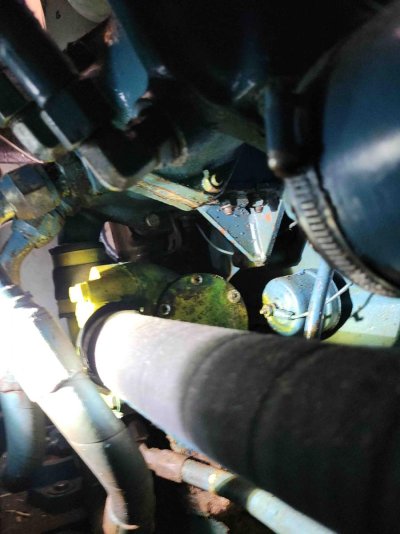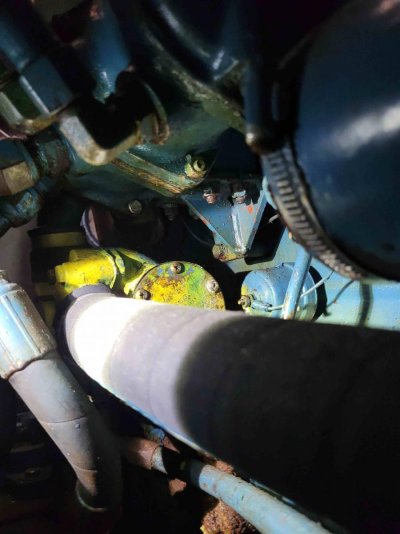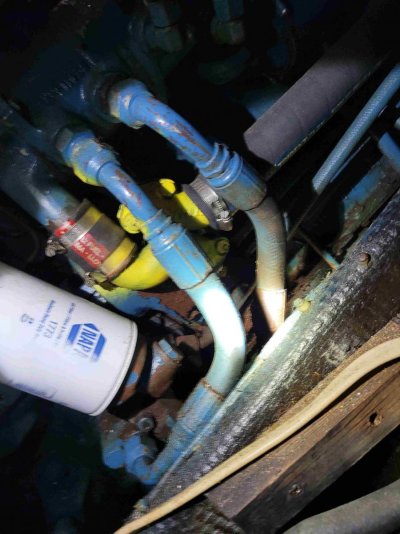PhilPB
Guru
- Joined
- Oct 5, 2021
- Messages
- 763
- Location
- Palm Beach County
- Vessel Name
- Sun Dog
- Vessel Make
- Mainship 34
Well, it's been 2 years and a few hundred hours since the last impeller change on my Perkins so I suspect that it may be time to do it again. I'm embarrassed to say that this is the first time I plan to do it myself not pay a mechanic. I've got the new impeller and believe I found the plate (has Jabsco imprint on it) where it lives. I hope that it will be as straightforward as it doesn't seem to be a difficult project to do.
I do remember the mechanic that did all maintenance on the engine when we bought it explained that his trick for installing the impeller is to first note the direction of the vanes of the old one before removal and use a tie wrap to help compress the new impeller vanes in the correct direction before installing, then cut and remove the tie wrap after it's far enough in.
I do remember the mechanic that did all maintenance on the engine when we bought it explained that his trick for installing the impeller is to first note the direction of the vanes of the old one before removal and use a tie wrap to help compress the new impeller vanes in the correct direction before installing, then cut and remove the tie wrap after it's far enough in.



